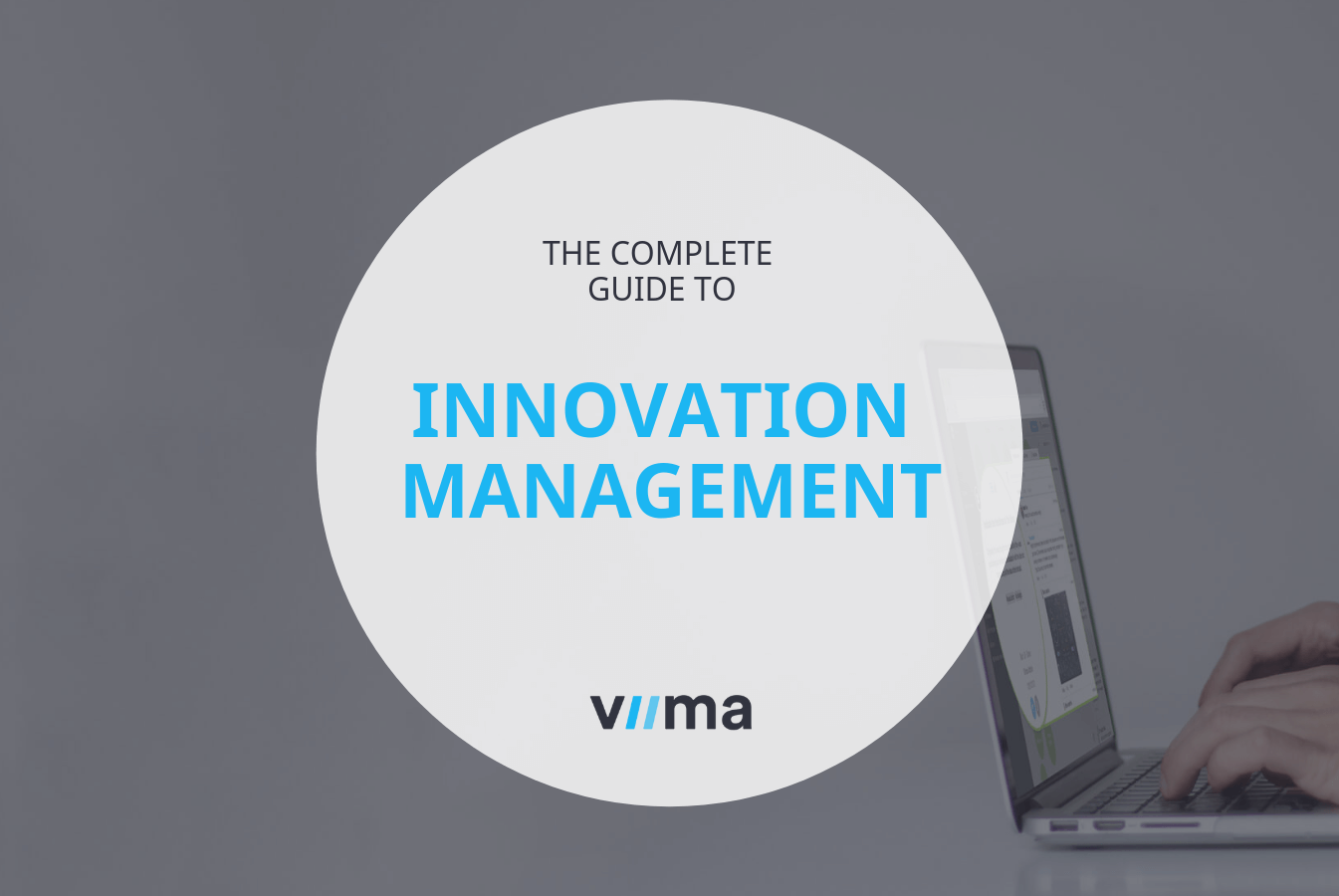What Is an Innovation Campaign - And How to Run One
Innovation has been on everyone’s lips for quite some time and now, more than ever, companies see it as the holy grail of growth. Indeed, this is a great way to create value and growth, but not the only one. What we have observed is that those who get innovation right have a clear advantage over those who don’t.
There are various reasons for the advantage of top innovators and their systematic approach to innovation is one of them. Innovation campaigns are structured methods of solving pressing problems or tackling exciting opportunities. They also help kickstart a wider focus on innovation.
So what is an innovation campaign, what are the key benefits, challenges and steps to get it right? Let’s dig deeper to find out how you can start innovating through campaigns or how to get better at it.

Table of contents
What is an innovation campaign?
First thing first, challenges and campaigns are sometimes incorrectly used interchangeably, especially when referring to innovation and ideation. While they are linked and they have similarities, it’s best to clarify what to use when.
A campaign refers to a series of actions directed toward achieving a goal. On the other hand, a challenge can be part of a campaign. A challenge implies a competition whose finality is to decide a winner.
As you probably know, innovation is the introduction of something new. That something could be anything from new services to products, processes and even incremental improvements to something that already exists.
- An innovation campaign is a systematic, time-bound method of pursuing innovation. Campaigns have final, specific goals, happen over a specific period of time and take place only once or can become recurrent.
- Compared to an innovation campaign, an idea challenge is focused on ideation to drive innovation. An idea challenge is meant to achieve innovation by gathering the most effective ideas and insights. It ends with a winning idea or solution and it’s followed by their implementation. Idea challenges are actually one method through which innovation campaigns can happen.
It’s also helpful for your organization to clarify these terms when you communicate internally. If there’s no common understanding of the terms and consistent use in terminology, pushing a new initiative to a wide, diverse audience can become messy.
What types of innovation campaigns are there?
Now that we’ve established the terminology, let’s move forward to the types of innovation campaigns you can choose to organize. Innovation is mostly a means through which you can achieve your higher, strategic goal. This means that innovation campaigns as well, depend greatly on the goal they pursue.
That being said, innovation campaigns are versatile and can be applied in different situations. We picked a few of the most common types of innovation campaigns and divided them into two large categories: open innovation and idea challenges.
Open Innovation
Open Innovation has become very popular, and the post-pandemic era enhanced even more the need for open collaboration to produce creative, valuable solutions. By now, open innovation needs no further introduction, but let’s remember that in a nutshell, it’s about organizations accessing external sources and knowledge to drive innovation internally.
We covered this topic in a previous article where you can find out everything about the types of open innovation, benefits and challenges as well as concrete examples of companies applying open innovation.
For now, we’ll focus on the innovation campaigns that can stem from the open innovation approach.
1. Crowdsourcing
It’s common for crowdsourcing to be confused with open innovation itself, but this is in fact just one way of doing open innovation. Crowdsourcing is the method through which ideas and knowledge are obtained from participants outside the organization, or at least the unit of the organization initiating the campaign. This method is used when companies want to get input, solutions and ideas to a specific theme or challenge.
Crowdsourcing is different from other types of open innovation because it’s accessing external resources, like customers, to get ideas or feedback on your products, services or business solutions. This type of campaign is usually open to a very wide audience and can attract thousands of participants. There is a lot of work involved, from marketing to communication and community management. It requires plenty of resources and a very well-organized plan. Some might argue that it’s not as effective as other types of campaigns.
However, Lego is the perfect example to show that crowdsourcing can work. Through their recurrent innovation campaign, Lego Innovation, they constantly gather ideas from customers worldwide and they implement those that get enough support and can prove financially viable.

2. Colleague crowd
A colleague crowd campaign is the opposite of crowdsourcing in the sense that it’s not about outsourcing but accessing internal knowledge. You can organize a colleague crowd to get employees to collaborate and provide relevant insight.
The advantage of a colleague crowd is that your workforce knows the business better than other external sources. You can organize a colleague crowd, for example, if you want to improve workplace satisfaction or safety. This approach could also be used to improve collaboration between teams. We know very well that tensions are very common between teams in large organizations. To help them see the others’ point of view you can use an idea management tool as a simple way to enable them to work collaboratively to solve their problems.
3. Co-creation
Another open innovation approach you can use for your innovation campaign is co-creation. It’s often confused with crowdsourcing because of their similar broader meaning, which is accessing external resources to get a solution to a problem, or new ideas that reveal further opportunities.
Co-creation, unlike crowdsourcing, is accessing the knowledge and inputs of a known audience. While crowdsourcing is more like a spray and pray approach, co-creation alternates outbound and inbound exchanges of information. It connects internal innovation activities with external resources.
Co-creation, unlike crowdsourcing, is accessing the knowledge and inputs of a known audience. It connects internal innovation activities with external resources.
A good co-creation example is the B&W Nivea deodorant. After thorough research to identify the concerns and needs of their customers, Nivea carefully selected a sample of people to conduct an online co-creation process to help them develop a new deodorant that doesn’t stain. For this campaign they used the voice of their customers to get new inputs and select the best ideas. Their co-creation campaign has successfully complemented the R&D work and managed to drive innovation from scratch.
• Idea Challenges
Idea challenges are a focused method to drive innovation through ideation. We have previously discussed in detail what idea challenges are and how to organize them. We have also created a complete toolkit that will guide you through the entire process.
To summarize, idea challenges in the context of innovation campaigns, it’s important to note that these can be:
- Problem-centric
- Solution-centric
The standard process to follow in this case it’s the double diamond of innovation, pictured below.
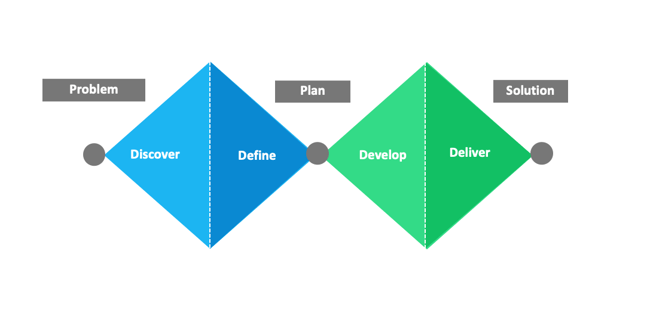
A problem-centric idea challenge is focused on discovering problems before coming up with solutions to them. In a solution-centric idea challenge, the problem has in turn already been defined, so the focus is on finding the best solution for the given problem.
Business benefits of innovation campaigns
Innovation campaigns have increased in popularity as the internet and new technologies have made it easier and more feasible to leverage the knowledge and creativity of crowds.
Innovation campaigns are versatile and come with plenty of benefits for businesses:
1. Reduced costs
For a given number of ideas and input generated through an innovation campaign, the costs are usually low. Especially if we put them next to activities organized for similar purposes, such as hackathons, brainstorming sessions or workshops. With innovation campaigns you are saving time and winning money.
2. Increased number and diversity of ideas
Through innovation campaigns you can easily harness the collective creativity of hundreds or even thousands of attendants. As long as campaigns are well planned and have a clear focus, getting new ideas and insights won’t be a problem.
Customers, employees or partners have easily become idea providers and as some research suggests, the ideas of crowds can generate more business than those coming from experts in their specific field.
The user-generated products sold by MUJI outperformed those created by professional designers by a huge margin. The products created with customer ideas had a gross margin that was four times higher in the first year and five times in the subsequent three years.
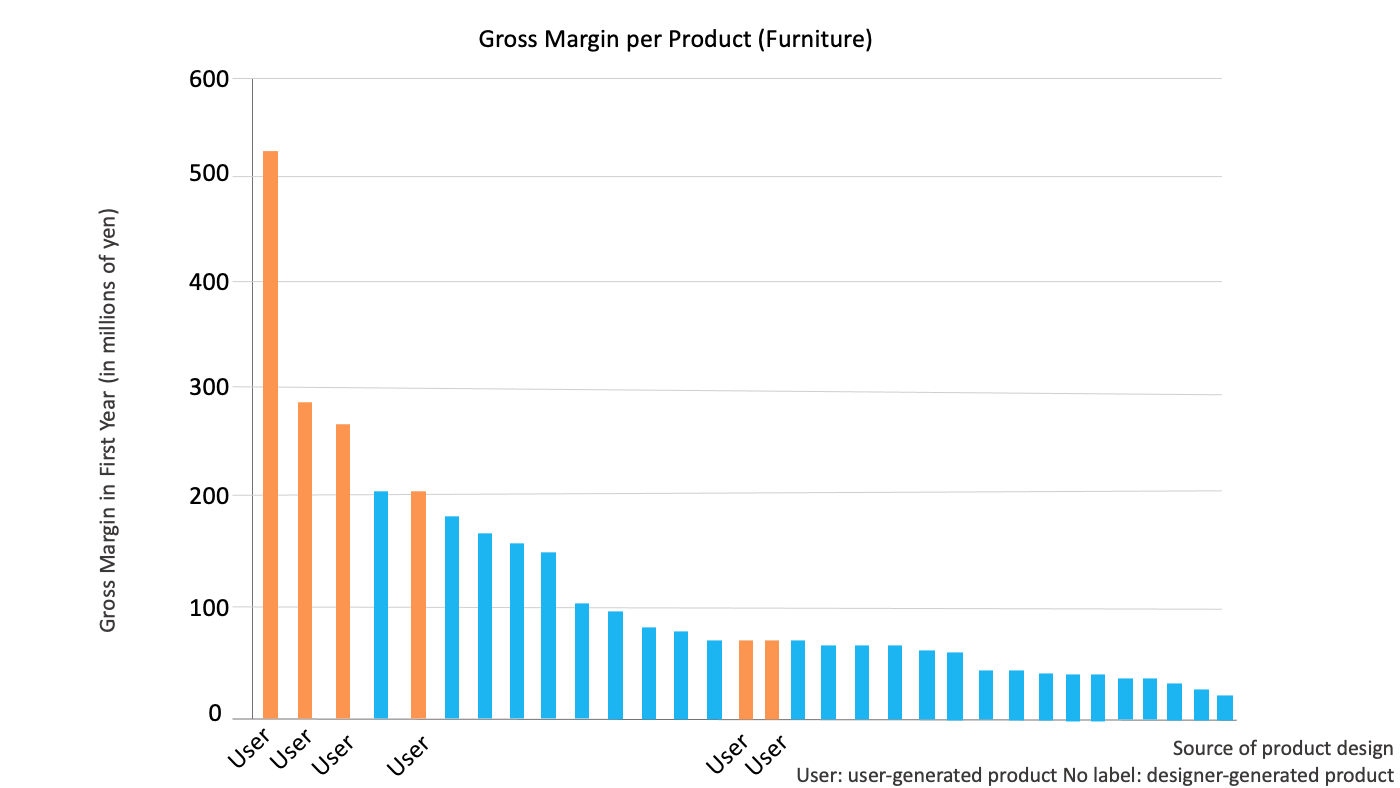 Of course, these results from the Japanese consumer goods company MUJI might not be replicable by every organization.
Of course, these results from the Japanese consumer goods company MUJI might not be replicable by every organization.
This outcome was possible also because participants who provided ideas outnumbered the internal resources. A higher number of participants naturally leads to an increased number of ideas, which takes us to the next benefit.
3. Improved quality of ideas
As the MUJI example showed, innovation campaigns can easily produce more ideas than any other initiative organized at a smaller scale. Such campaigns also bring together people from different backgrounds and their diversity is very valuable.
It’s easy to get caught up in the old style thinking that “leaders and managers know best”. But there's so much value in getting fresh perspectives. This variety provides not just diverse ideas but also helps organizations identify new opportunities for business growth. These could be new products, improvements or business models which can later become profitable streams of revenue.
4. Brand awareness
There is huge potential in using innovation campaigns for marketing purposes as well. Even more interesting, HBR suggests that a product’s performance increases by 20% when it’s labelled as “customer-ideated”.
Finnish retailer, Alepa, launched the Block Wish campaign to discover what customers want from their local stores. Alepa stores became more popular thanks to the Korttelitoive chatbot service that allowed customers to easily express their wishes. This campaign helped automate logistics and product line changes with 70% wishes fulfilled in 48 hours. Nine out of ten customers were satisfied with the service, so this proved to be a successful innovation campaign that also increased brand awareness.
The chance to use innovation campaigns as marketing campaigns should not be missed, especially in the case of crowdsourcing or outside-in type of challenges. They can increase brand visibility as well as customer loyalty.
Innovation campaigns can even be intentionally directed toward gathering marketing ideas. Your marketing team can start an idea challenge to get a fresh perspective.
5. Employee engagement, and increased retention
All employees want to feel valued and listened to. Intrinsic motivation has greater effects than financial incentives. Giving a voice to your workforce shows that you care and acknowledge their work.
Innovation campaigns can be organized for a myriad of reasons, even for organizational purposes. For example, you can engage employees through an onboarding challenge idea. The bigger the company the harder it becomes to onboard new employees. Those who have gone through that same process might have ideas to improve it. Give it a try. You might be surprised by the results.
How to do an innovation campaign
Having read about the benefits of innovation campaigns, now you must be eager to get started. Before that, here are six important steps to guide you through the process:
1. Single focus
Decide before hand what is the goal of your innovation campaign. A focused goal is a first important step as this will guide your next decision: the type of campaign.
 How to set your goals? Think of what you want to achieve, what is your priority and how well it fits and supports the business strategy. Don’t go too generic or too specific. A too generic goal will make it harder for participants to understand what you are after and if it’s too specific it might limit the opportunities for great ideas and solutions.
How to set your goals? Think of what you want to achieve, what is your priority and how well it fits and supports the business strategy. Don’t go too generic or too specific. A too generic goal will make it harder for participants to understand what you are after and if it’s too specific it might limit the opportunities for great ideas and solutions.
Regardless of the goals you set, they have to be quantifiable. Otherwise, how will you know they have been achieved?
2. Decide what type of innovation campaign to organize
This one can vary greatly from business to business, but it is mostly guided by your goals and objectives.
Maybe you need to boost performance and identify opportunities for improvement so an idea challenge could be more appropriate. If you have a specific product that needs input from external sources, you’ll want to look into crowdsourcing options.
There are numerous business goals for which organizing an innovation campaign makes sense. Whether you want external knowledge or internal expertise, it’s best to map out the possible approaches and their fit with your goals before making a final decision or advancing to the next step.
3. Choose the target audience
Depending on the type of campaign you will organize, the participants will be either internal, inside of your organization or external, like customers, partners, stakeholders and so on.
The next thing is to look into the possible audience according to their relevance, size and reachability. In short, you should be able to balance these three factors.
Once you have decided the participants, it will be easier to decide on the communication channels and tools. Check out our complete guide to idea challenges for more details on choosing the participants.
4. Planning and execution
Now that you have chosen the goal, the participants and communication tools, you can start planning. Try answering questions like: How to get the message through? How long is the campaign? How to reach participants, what questions to ask and how often? How to encourage participation? What incentives to offer? How are results measured and what determines if the campaign is a success or a flop?
When it comes to incentive to increase reach and attendance, think beyond prizes and financial gains. For example, the LEGO innovation campaign has created a community around it. People are motivated by having their ideas acknowledged and seeing them become reality. The 1% they get from sales is a contributing factor, but not the single most important one.
5. Launch and monitor
Launch your innovation campaign and monitor the performance. You might have to make changes along the way so be patient, flexible and proactive.
6. Follow up
The innovation campaign is just the beginning and only because you reached a final result doesn’t mean your work is over. Focusing only on getting to the end is counterproductive for long term results. It’s important to make sure that innovations are followed through and implemented.
This step usually means handing it over to other business units in charge of putting things into practice. At the end, you want to have tangible results for both the organizations and participants.
Challenges and risks of innovation campaigns
Things can always go south, even if you had a detailed plan. Some risks are harder to predict but being aware of some common challenges can help minimizing them. With innovation campaigns, the end result is not entirely in your hands and while solid plans are important, you have to be prepared to adapt to unforeseen changes.
These challenges can be operational, strategic, legal or cultural. If you identify and can prevent any of these, you will save time, money and maybe even the entire campaign from failing.
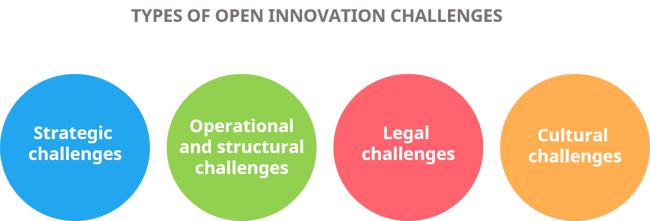
1. Lack of accountability and commitment
Organizing a good innovation campaign can turn into a full-time job. These projects are intensive and require complete focus from project or community managers in charge of them. When planning, assess the resources, delegate tasks and decide who is the main responsible.
Assign an owner who can evaluate ideas, provide feedback and give visibility to the progress of the campaign. The main responsible has to keep the campaign alive, otherwise people lose interest.
When no one takes full responsibility for the project, it’s hard to build trust and motivate people to take part. It’s easy to see when there is no full commitment to the campaign. If no one is aware of the progress of the campaign, the details are blurry and the direction is not clear, then you have to take action.
2. Increased complexity
The number of people involved, the nature of information and the collaborative process can make some innovation campaigns rather complex.
The lack of a clear strategy and a well-planned campaign can make things even more complicated for both organizers and participants. Focus and communication are the keys here. From planning, to launching and reporting the results, communication has to be concise and transparent. We recently talked on our blog about the best ways to communicate when launching an innovation initiative.
Choosing the right tools will also help you manage complexity better. In the planning phase, consider the actual steps you’ll go through and how the tool you choose will support your work. Use an appropriate innovation management tool to gather ideas, keep the conversation going, evaluate and rate inputs.
An innovation campaign becomes less complicated when you build an effective process around it. Innovation initiatives often fail because they become islands, separate from the rest of the organization. It’s important to have the resources and a clear plan in place on how to go from an idea all the way to innovations that are actually on the market. This will remove a huge amount of ambiguity and bring clarity.
It’s important to have the resources and a clear plan in place on how to go from an idea all the way to innovations that are actually on the market.
3. Unclear goals, not being aligned with strategic objectives
It’s important to understand and promote the “why” because it gives focus and direction to the campaign. It becomes especially challenging to manage a campaign when the goals are not clear. If these goals are not aligned with the business strategy, it can easily turn into a waste of everyone’s time.
For example, Heineken has used co-creation and crowdsourcing to find solutions for sustainability and product design. Originally launched in 2009, their Brew a Better World campaign brought them $1.1 billion in revenue.
Their commitment to innovation had specific goals: build customer loyalty and get a competitive advantage through innovation. This strategy also helped them gather new ideas at a fraction of the cost of traditional methods.
Practical Tips for a successful innovation campaign
Innovation campaigns are an open door to collective creativity, not suggestion boxes for gathering feedback. This means that they also require more effort than just gathering ideas. Consider the next steps after the campaign has ended. Following up on innovation initiatives should be taken seriously, otherwise you might lose the trust of those who put the effort into making it happen.
There is no recipe for success when it comes to innovation campaigns, but with discipline, commitment and a few tips, you enhance your chances of succeeding. Here are 5 tips we think are important to consider when working on your campaign.
1. Get participants excited and motivated
Use multi-channel communication to involve as many people as possible. If you are thinking of open innovation and idea challenges outside of the company, consider the channels that can reach the desired audience. Use different communication channels, but not an overwhelming number.
Tell a story. No one gets excited by dry details like profit margins, sales, acquisition cost and so on. The story of collective creativity and meaningful participation, as well as the ability to make a difference, sounds more appealing. When telling your story focus on the “why” you are doing the campaign, and why it’s in their interest as well.
Even if it’s a bit more difficult to articulate the “why” try to think of intrinsic motivators like meaning, choice, competence and progress. Also, think of providing incentives that encourage novel and creative thinking. As already mentioned, it’s not just about the money. Financial incentives for ideas or solutions could increase the number of submissions and participants, but intrinsic motivation can reveal more creativity and ingenuity.
Financial incentives for ideas or solutions could increase the number of submissions and participants, but intrinsic motivation can reveal more creativity and ingenuity.
2. Gain credibility and trust
Managers and C-level executives play an important role as their presence builds credibility and trust. You should try to include them in your communication plan. Explain that their role is crucial for the campaign to gain traction and ask them to address participants directly.
Effective communication builds trust and also enables transparency. Improve transparency through a two-way communication where participants feel listened to and their role is acknowledged.
3. Keep it simple
Don’t start more campaigns at once as it can get confusing and divert attention from what you want to achieve. Avoid overlapping campaigns or organizing them too often. It can ire and overburden those involved. It’s best to use innovation campaigns as a power tool to address specific goals fast. However, on the long term you should focus on moving toward continuous ideation and innovation across the organization.
4. Choose the right tools
If you want to increase the attendance rate, you have to make sure participants have a good experience. Tools can make or break this experience. Nobody wants to deal with technical details and waste their time trying to figure out how to contribute. This also applies to the organizing team who does all the heavy lifting in the background.
So, pick tools that will help you manage the whole innovation process. We’ve done the research and compiled a list with the 20 best innovation management tools.
5. Plan for the long term
Innovation campaigns are a great answer to acute specific challenges that require new ideas, creativity and collaboration. However, they are just a means to support bigger strategic innovation goals.
If you want to see solid results from innovation you can’t rely solely on small changes but you have to embark on a longer journey. Take baby steps toward the right direction and as long as you keep your goals in mind you are on the right track. This approach will lead to more powerful results and will transform your organization. 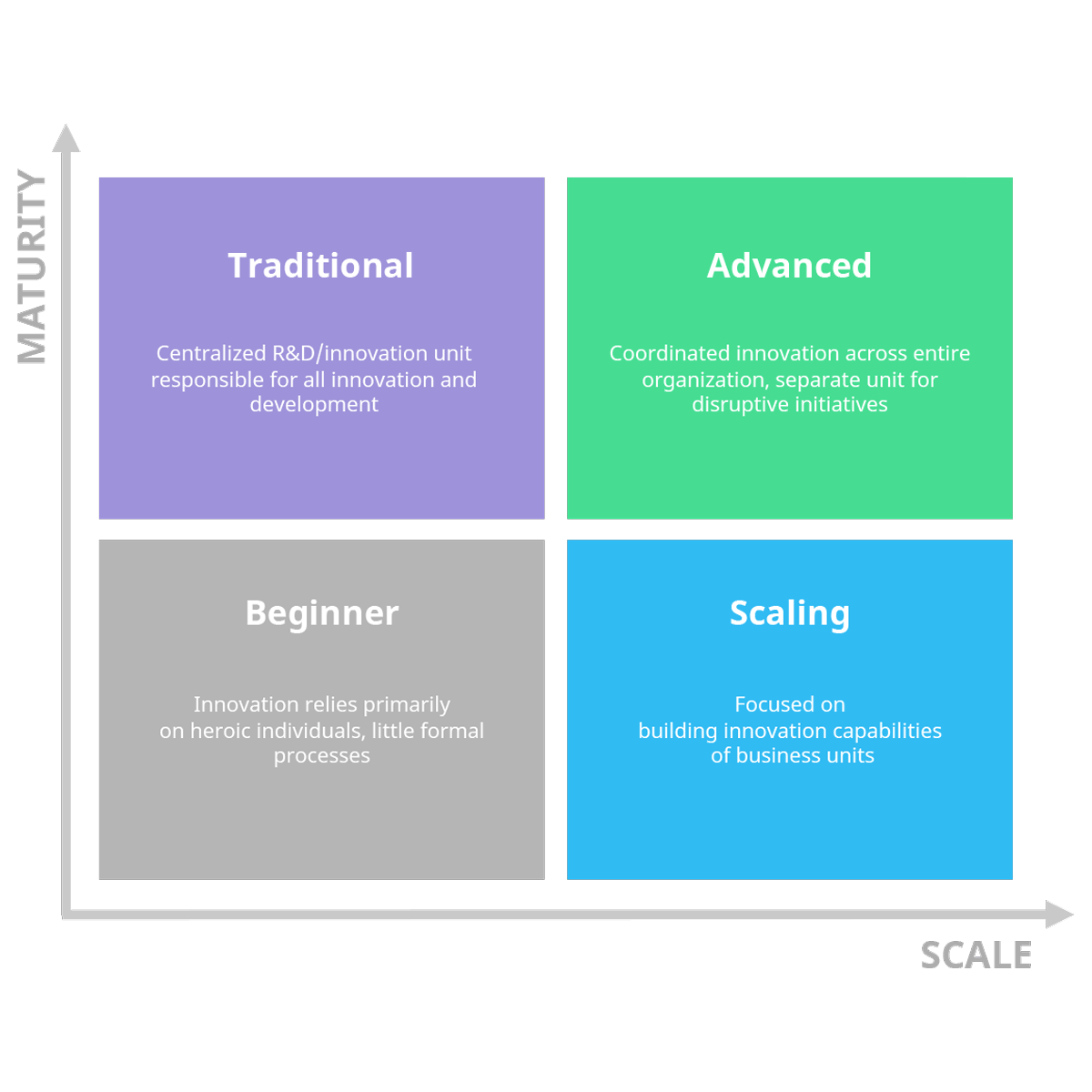
We wrote more about assessing your innovation maturity and how to achieve this transformation through the Innovation Maturity Matrix.
Conclusion
Innovation campaigns are a great way to access new sources and open the door to new perspectives and opportunities. Whether you will work with internal or external stakeholders, their participation can bring a new way of thinking and help you improve your innovation efforts.
We’ve seen that innovation campaigns have the power to increase profitability, create better products and generate new opportunities for growth. They are a great way to move toward a more holistic approach to innovation, but at the same time it’s good to keep in mind that they are by no means a shortcut. Innovation campaigns require loads of work and resources, as well as responsibility and accountability.
It’s up to you to decide if this approach would work for your specific situation as innovation campaigns are not the right tool for everything and everyone.
Idea challenges are one of the methods through which you can put an innovation campaign in practice. So we have created a practical Idea Challenge toolkit that takes you through all the steps, from planning to choosing your participants, to launching and communicating the details. You can download the toolkit here.



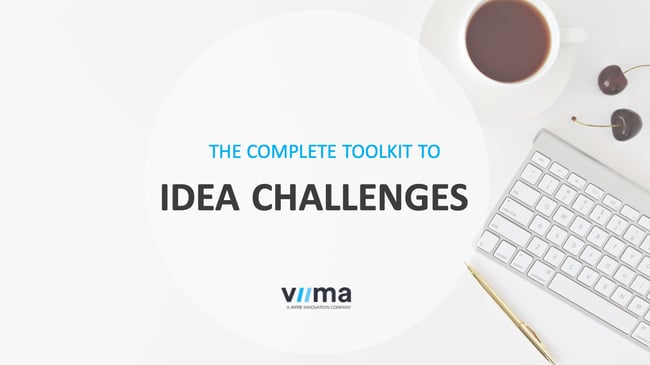
.jpg)



